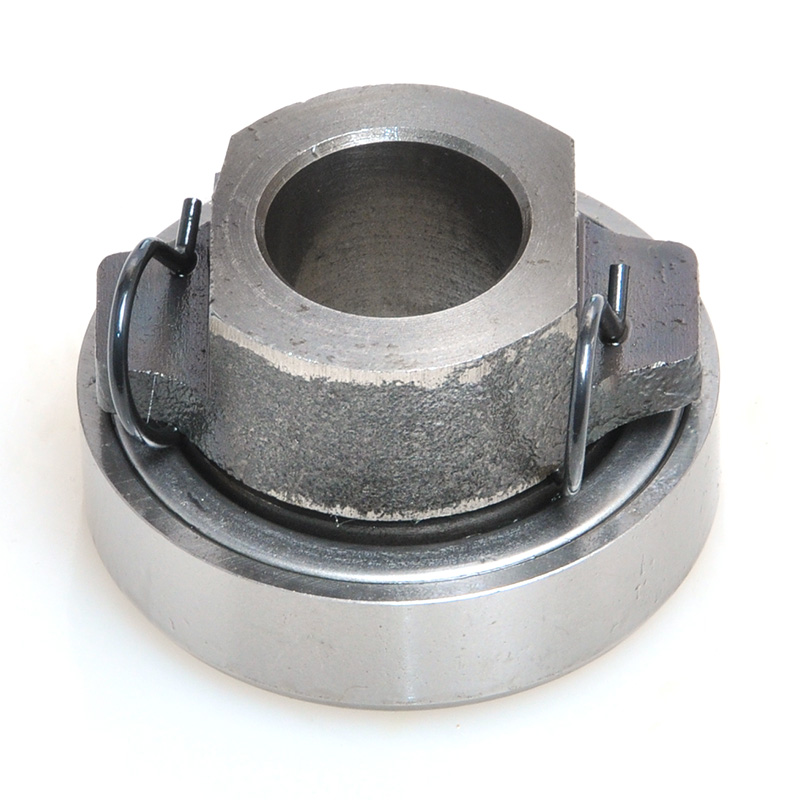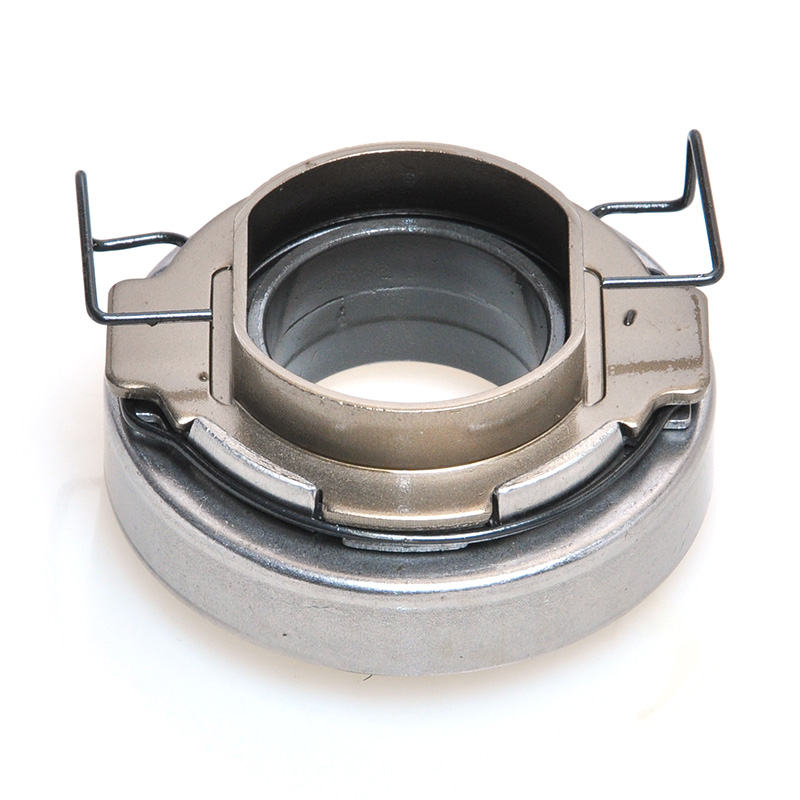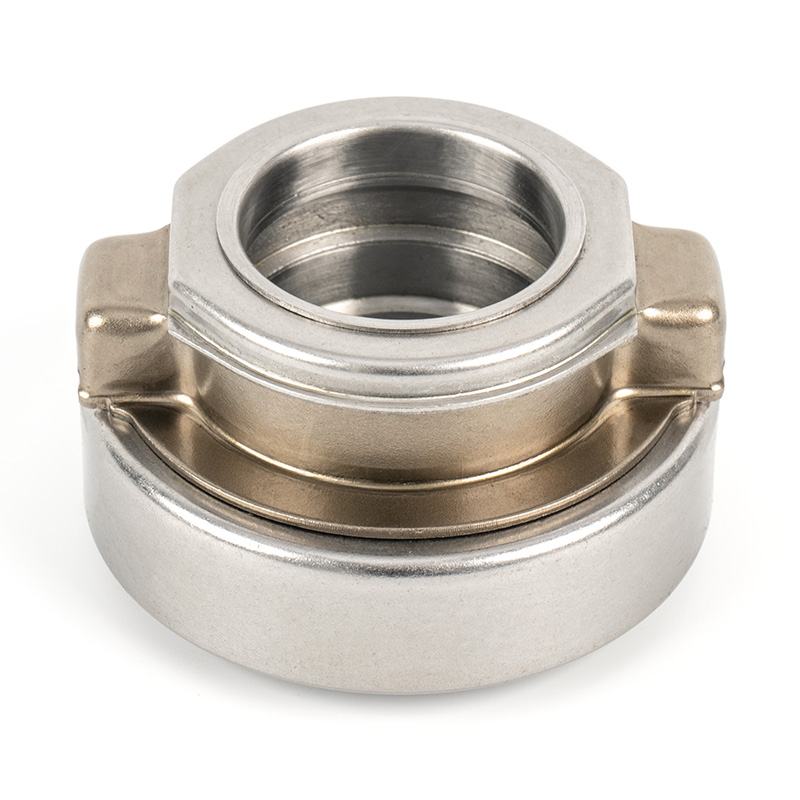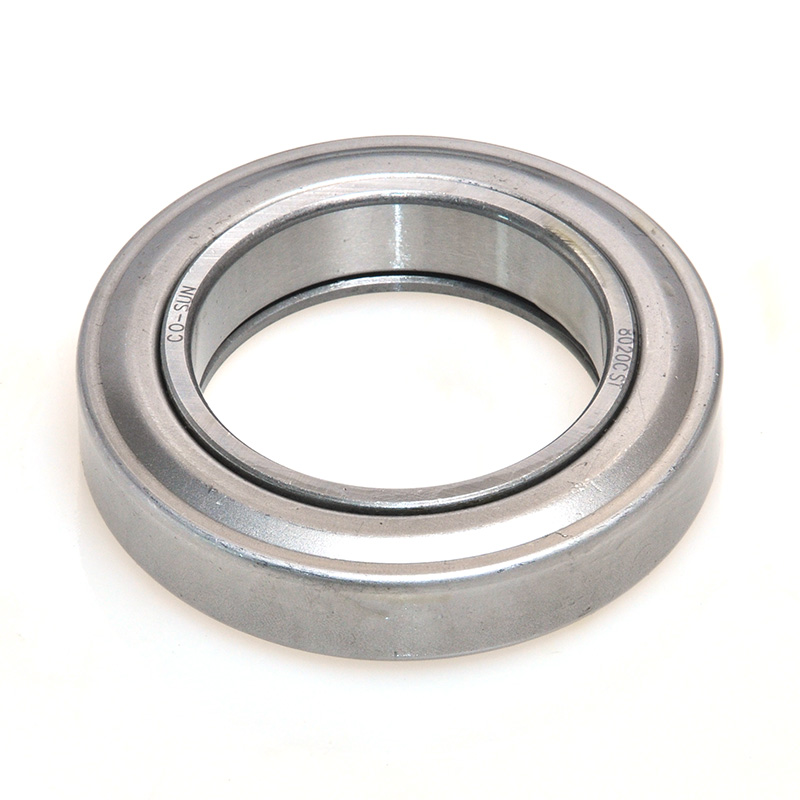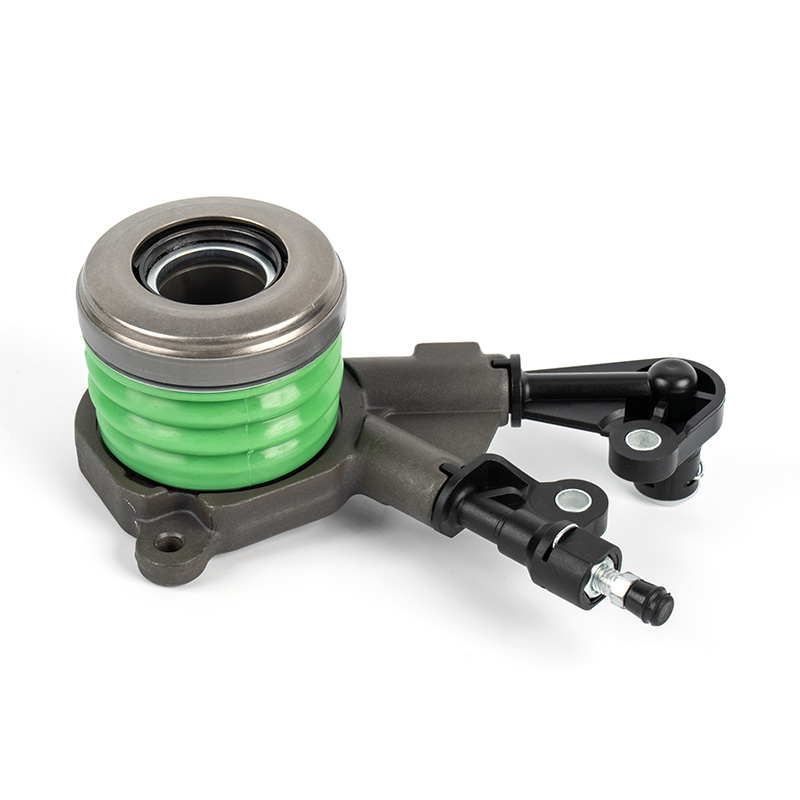What is Mechanical Clutch Release Bearing?
1.What is Mechanical Clutch Release Bearing
A mechanical clutch release bearing, fundamentally, is a specialized bearing unit that functions as the critical interface between the rotating clutch assembly and the stationary actuation mechanism. Unlike a standard radial ball bearing, it is designed to withstand significant axial (thrust) loads while simultaneously allowing for smooth linear movement along the transmission's input shaft sleeve. Its primary role is translational: it converts the rotational motion of the clutch fork into a linear, axial force that acts upon the diaphragm spring or release levers of the pressure plate. This component exists in two main operational states: at rest (where it may have minimal contact in some designs) and under load during clutch disengagement. Its design is a compromise between rotational durability, axial load capacity, and minimal sliding friction.
2. Basic Function and Operating Principle
The operating principle can be dissected into a sequence of mechanical events:
Input: The driver depresses the clutch pedal. This action pulls a cable or moves a series of rods and pivots (the mechanical linkage).
Transfer: The clutch fork, which is anchored at a pivot point, is actuated by this linkage. The outer end of the fork engages with a groove or ring on the release bearing.
Engagement and Load Application: The release bearing is pushed forward along the input shaft sleeve. Its bearing face makes contact with the inner ends (fingers) of the diaphragm spring on the pressure plate.
Disengagement: As the bearing applies further axial force, it causes the diaphragm spring to deflect. This "reverse" action of the spring pulls the pressure plate away from the clutch disc. This interrupts the torque path from the engine (flywheel) to the transmission (input shaft), allowing for gear selection.
Return: Releasing the pedal reverses the process. The pressure plate's spring force returns it to the engaged position, and the release bearing retracts, typically via the return springs on the clutch fork or the self-centering nature of the diaphragm spring.
3. Applications
This component is ubiquitous in systems where a direct mechanical link is preferred or deemed sufficient. Its applications extend beyond standard passenger vehicles to include:
Light to Medium-Duty Trucks: Where mechanical simplicity and serviceability are valued.
Motorcycles: Many manual clutch motorcycles use a similar mechanical thrust bearing principle.
Agricultural and Construction Machinery: Tractors and heavy equipment often employ robust mechanical linkage systems.
Industrial Machinery: Any equipment with a manually operated friction clutch, such as presses or conveyor drives.
4. Comparison with Hydraulic Release Systems
The distinction between mechanical and hydraulic systems is a matter of force transmission methodology.
| Feature | Mechanical Release System | Hydraulic Release System |
| Force Transmission | Direct physical link via cable or rod linkage. | Indirect via hydraulic fluid in a closed circuit (master cylinder to slave cylinder). |
| Pedal Feel | Generally higher pedal effort, more direct mechanical feedback. | Lower pedal effort, smoother and more consistent engagement. |
| Packaging & Layout | Limited by the need for a direct mechanical path; can be challenging in complex vehicle layouts. | Flexible; hydraulic lines can be routed around obstacles, offering greater design freedom. |
| Self-Adjustment | Often requires manual adjustment of cable tension or linkage to compensate for clutch wear. | Many systems are self-adjusting, maintaining consistent pedal height as the clutch wears. |
| Common Failure Points | Cable stretch/fraying, linkage wear/binding, pivot point corrosion. | Fluid leaks (seals), air ingress (requiring bleeding), slave cylinder failure. |
| Maintenance | Periodic cable/linkage inspection and adjustment. |
5. Materials and Lubrication
Materials:
Bearing Rings and Balls: Typically made from high-carbon chromium steel (e.g., AISI 52100) through-forged or machined, and heat-treated to a high hardness (typically 58-64 HRC) for wear resistance and fatigue life.
Cage/Retainer: Often stamped steel or, in higher-performance applications, machined bronze or polymer (e.g., polyamide) to reduce friction and weight.
Contact Face: The face that touches the pressure plate fingers is hardened and ground to a fine surface finish to minimize wear and galling.
Body/Housing: Usually a pressed or sintered steel component, designed to securely locate in the clutch fork.
Lubrication:
The bearing is pre-packed with a high-temperature, high-pressure lithium complex or synthetic grease during manufacture. This grease must retain its viscosity and lubricity under extreme temperatures (from cold starts to the heat generated by clutch friction).
The grease is sealed within the bearing assembly by contact seals (often nitrile rubber) to prevent leakage and contamination from external debris like clutch dust.
Note: The contact point between the bearing's outer ring and the pressure plate fingers is a "dry" interface and should not be lubricated, as grease here would attract abrasive clutch dust, forming a lapping compound that accelerates wear.
6. Common Failure Modes and Root Causes
Failure Modes:
Audible Noise: A chirping, squealing, or grinding noise that occurs only when the clutch pedal is partially depressed. This is the most classic symptom, indicating a dry or damaged bearing under load. A rattle when the pedal is released may indicate a worn bearing with excessive internal clearance.
Rough Engagement/High Pedal Effort: A gritty or notchy feeling through the pedal, caused by increased friction from a failing bearing.
Complete Seizure: The bearing fails to rotate, leading to rapid, severe wear of the bearing face and the pressure plate fingers, and preventing full clutch disengagement (causing gear crunching).
Root Causes:
Normal Wear: The primary cause. The bearing has a finite lifecycle due to cyclic loading and high-stress contact.
Contamination: Failure of bearing seals allows abrasive clutch dust and moisture to enter, degrading the grease and abrading the bearing surfaces.
Improper Adjustment: Excessive pedal free-play can cause the bearing to spin continuously against the pressure plate, generating heat and accelerating wear. Insufficient free-play can cause the bearing to be under constant load, leading to overheating and premature failure.
Misalignment: If the bearing is not sitting square to the pressure plate, it experiences uneven loading, leading to localized stress and early failure.
Overheating: Caused by aggressive clutch use (e.g., "riding the clutch") or a dragging clutch, which transfers excessive heat from the clutch assembly to the bearing, breaking down the lubricating grease.
Faulty Installation: Physical damage during installation, such as dropping the bearing or impacting it incorrectly, can compromise its internal structure.
7. Diagnosis and Inspection
A systematic diagnostic approach is required:
Operational Noise Test: With the engine running, listen carefully while slowly depressing and releasing the clutch pedal. A noise that is present only during the pedal's travel (and disappears when the pedal is fully up or down) strongly points to the release bearing.
Clutch Pedal Inspection: Check for excessive free-play (the distance the pedal moves before resistance is felt). Typically, a small amount (e.g., 10-25mm) is specified. Also, feel for roughness or vibration through the pedal.
Visual Inspection: This requires transmission removal. Inspect the bearing for:
Axial and Radial Play: Try to wobble the bearing. Any significant play indicates wear.
Smoothness of Rotation: Spin the bearing by hand. It should rotate freely and quietly. Any grinding, binding, or roughness confirms failure.
Physical Damage: Look for cracks, pitting, bluing (from overheating), or excessive wear on the contact face.
8. Replacement Cycle, Timing, and Key Installation Points
Replacement Cycle: There is no fixed mileage interval. The bearing is a "replace-on-failure" or "replace-as-a-set" component. Industry best practice dictates replacing the release bearing every time the clutch disc and pressure plate are replaced, regardless of the bearing's apparent condition. The labor cost to access these components is high, and reusing an old bearing risks a premature failure that would necessitate another costly teardown.
Key Installation and Adjustment Points:
Cleanliness: The work area and all components must be impeccably clean to prevent contamination.
Component Verification: Ensure the new bearing matches the old one in all dimensions and specifications. Never install a bearing that has been dropped or is damaged.
Lubrication of Contact Points: Lightly lubricate the following with high-temperature bearing grease:
The input shaft sleeve where the bearing slides.
The groove on the bearing housing where the clutch fork sits.
The pivot ball or point for the clutch fork.
CRITICAL: Do not lubricate the bearing's contact face or the pressure plate fingers.
Proper Seating: Ensure the bearing is fully and squarely seated on its carrier and that the clutch fork is correctly engaged.
Post-Installation Adjustment: After reassembly, the clutch pedal free-play must be adjusted to the vehicle manufacturer's specification. This is the single most important step to ensure the new bearing's longevity.
9. Frequently Asked Questions (FAQ)
Q: Can a failing release bearing cause difficulty in shifting gears?
A: Yes. If the bearing is seized or binding, it may not fully disengage the clutch, leaving drive torque applied to the transmission input shaft. This "clutch drag" makes synchronizing gears difficult, resulting in grinding during shifts.
Q: Is it safe to drive with a noisy release bearing?
A: While the vehicle may still be drivable for a short period, it is not recommended. A noisy bearing is in a state of advanced wear and can fail catastrophically at any time, potentially seizing and causing secondary damage to the much more expensive pressure plate and clutch fork.
Q: Why is my new release bearing noisy?
A: This is uncommon but can occur. Causes can include a defective bearing, contamination during installation, misalignment of the transmission, or most commonly, incorrect clutch pedal free-play adjustment putting the bearing under constant pre-load.
Q: What is the difference between a "pull-type" and "push-type" clutch release bearing?
A: This refers to the direction of force. Most common mechanical systems are "push-type," where the fork pushes the bearing towards the pressure plate. "Pull-type" clutches, often found in heavy-duty applications, require the bearing to be pulled back to disengage the clutch. The bearing and system design are specific to each type.
 +86-13867573512
+86-13867573512

